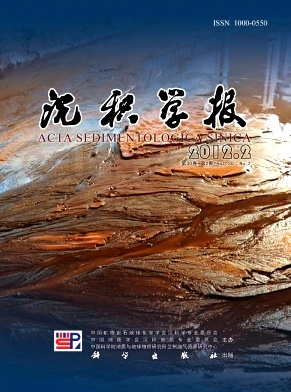Diagenetic Evolution Modes of the Deep Formation of Jiyang Subbasin, Paleogene
- Publish Date: 2012-04-10
-
Key words:
- diagenetic evolution mode /
- secondary pore /
- influencing factor /
- deep formation /
- Paleogene /
- Jiyang subbasin
Abstract: The diagenetic evolution modes of clastic rocks in deep formation of Paleogene in the main areas of Jiyang subbasin are researched through thinsection analysis, scan electricity microscope observation, Ro test, and reservoir physical parameters analyses, etc and combining histories of tectonic development. It is recognized that there are six types of diagenetic evolution modes mainly affected by tectonic setting, reservoir pressure and fluid environment in it. There are early moderatestrong overpressure, moderatestrong compaction, cementation and dissolution with the multiple medium diagenetic evolution mode and the diagenetic evolution mode of late moderatestrong overpressure, strong compaction, cementation and strong dissolution with acidic medium on the weak steep slopes or gentle slopes. The strength of reservoir compaction is mainly affected by the formation time of the overpressure and the fluid environments are controlled by different tectonic setting in these cases. There are diagenetic evolution mode of normal pressure or weak overpressure, moderatestrong compaction, cementation and strong dissolution with the acidic thermal fluid and diagenetic evolution mode of weakmoderate overpressure, little strong compaction and cementation and strong dissolution with the acidic thermal fluid in the deep sags. Thermal fluid which enhances the dissolution of acid soluble components is the main influencing factor of these diagenetic evolution modes. There are diagenetic evolution mode of moderatestrong compaction, cementation and weak dissolution with acdic medium and diagenetic evolution mode of strong cementation, weak moderate dissolution with multiple medium in normal pressure condition on the steep slopes. The multiple medium which results from early deposition water, late diagenetic water and mixture of both is the main influencing factor in these cases. It's considered that the stratum and buried depth is the primary factor of the diagenetic alteration of the deep formation in Jiyang subbasin, Paleogene, and the tectonic position is the basic premise of diagenetic pressure and fluid field characteristic. The deep thermal fluid has different effects on reservoir evolution in different fluid fields. Multiple diagenetic environment of acidalkaline alternating increases the number of secondary porosity and affects vertical distribution of secondary porosity, but preservation rate of the original porosity in multiple diagenetic environment is more than 5% lower than that in acidic diagenetic environment.
| Citation: | Diagenetic Evolution Modes of the Deep Formation of Jiyang Subbasin, Paleogene[J]. Acta Sedimentologica Sinica, 2012, 30(2): 231-239. |






 DownLoad:
DownLoad: